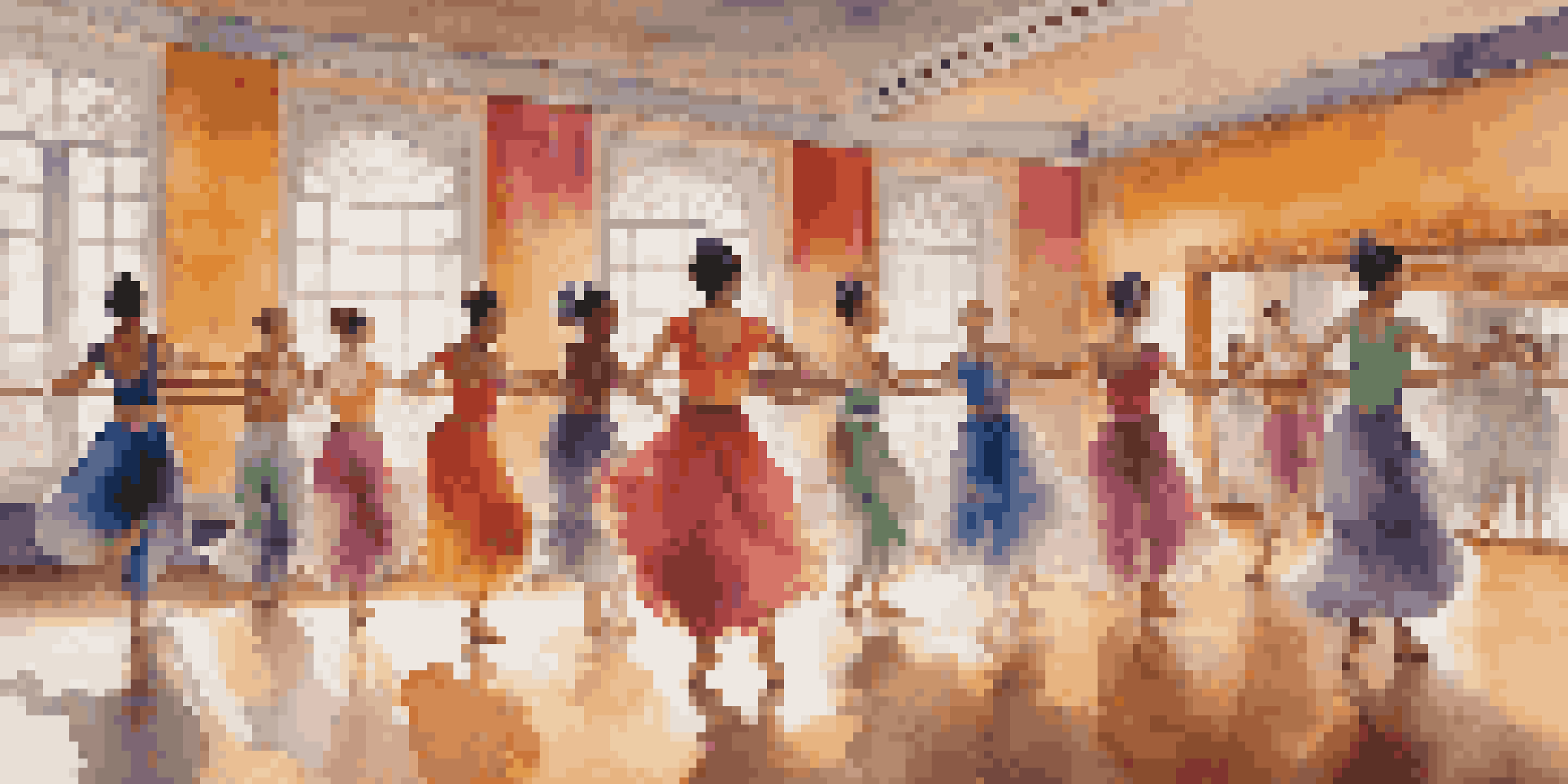Cultural Appropriation vs. Cultural Appreciation in Dance

Defining Cultural Appropriation and Appreciation in Dance
Cultural appropriation in dance occurs when elements from one culture are used by individuals from another culture without permission or understanding. This often leads to misrepresentation or commodification, stripping away the significance of cultural practices. In contrast, cultural appreciation involves a respectful acknowledgment and celebration of another culture's dance forms, aiming to learn and honor rather than exploit.
The Importance of Context in Dance Forms
Context plays a crucial role in distinguishing between appropriation and appreciation. For example, a performance that showcases traditional Native American dance must be framed within its cultural significance and history. When dancers take the time to understand the origins and meanings behind the movements, they elevate their practice from mere imitation to genuine appreciation.
Cultural Context Matters in Dance
Understanding the cultural significance behind dance forms is essential for distinguishing appreciation from appropriation.
Examples of Cultural Appropriation in Dance
One prominent example of cultural appropriation in dance is when mainstream artists adopt elements from hip-hop or breakdancing without acknowledging their roots in African American and Latino communities. This often results in a diluted representation that overlooks the struggles and histories behind these dance forms. Such instances can lead to feelings of erasure among the original creators and communities.
Celebrating Cultural Appreciation Through Collaboration
Cultural appreciation can flourish through collaboration, where dancers from different backgrounds work together to create art that respects and honors their respective traditions. For instance, a fusion dance performance that combines classical Indian Odissi with contemporary ballet can highlight the beauty of both styles while fostering mutual respect. This kind of cross-cultural exchange enriches the dance community and promotes understanding.
Education Empowers Dancers
Workshops and classes that explore the history of dance styles help dancers honor the traditions they incorporate.
The Role of Education in Dance Practices
Education is vital in navigating the delicate balance between appropriation and appreciation. Workshops, classes, and discussions that delve into the cultural significance of various dance forms can empower dancers to make informed choices. By learning the history and context behind each style, dancers can enhance their performances while honoring the traditions they draw from.
Recognizing Privilege in Dance Spaces
Understanding privilege is essential when discussing cultural appropriation in dance. Often, individuals from dominant cultures gain visibility and success by appropriating elements from marginalized cultures, leaving the original creators sidelined. Acknowledging this dynamic can inspire dancers to reflect on their roles within the dance community and advocate for equitable representation.
Social Media Shapes Dance Culture
While social media can promote cultural appreciation, it also risks fostering appropriation by neglecting the origins of dance styles.
Navigating Social Media's Influence on Dance Culture
In today's digital age, social media significantly influences how dance is perceived and shared. While it can be a powerful tool for cultural appreciation, it also risks promoting appropriation through trends that overlook the roots of particular dance styles. Dancers and audiences alike must remain vigilant about the content they engage with, fostering a culture that prioritizes respect and authenticity.
Creating a Future of Respectful Dance Practices
As the dance community continues to evolve, there is a growing emphasis on creating a future built on respect and understanding. By fostering open dialogues about cultural sensitivity and encouraging diverse voices, we can cultivate a dance environment that celebrates all cultures. Ultimately, the goal is to move towards a space where appreciation thrives, and appropriation is recognized and challenged.